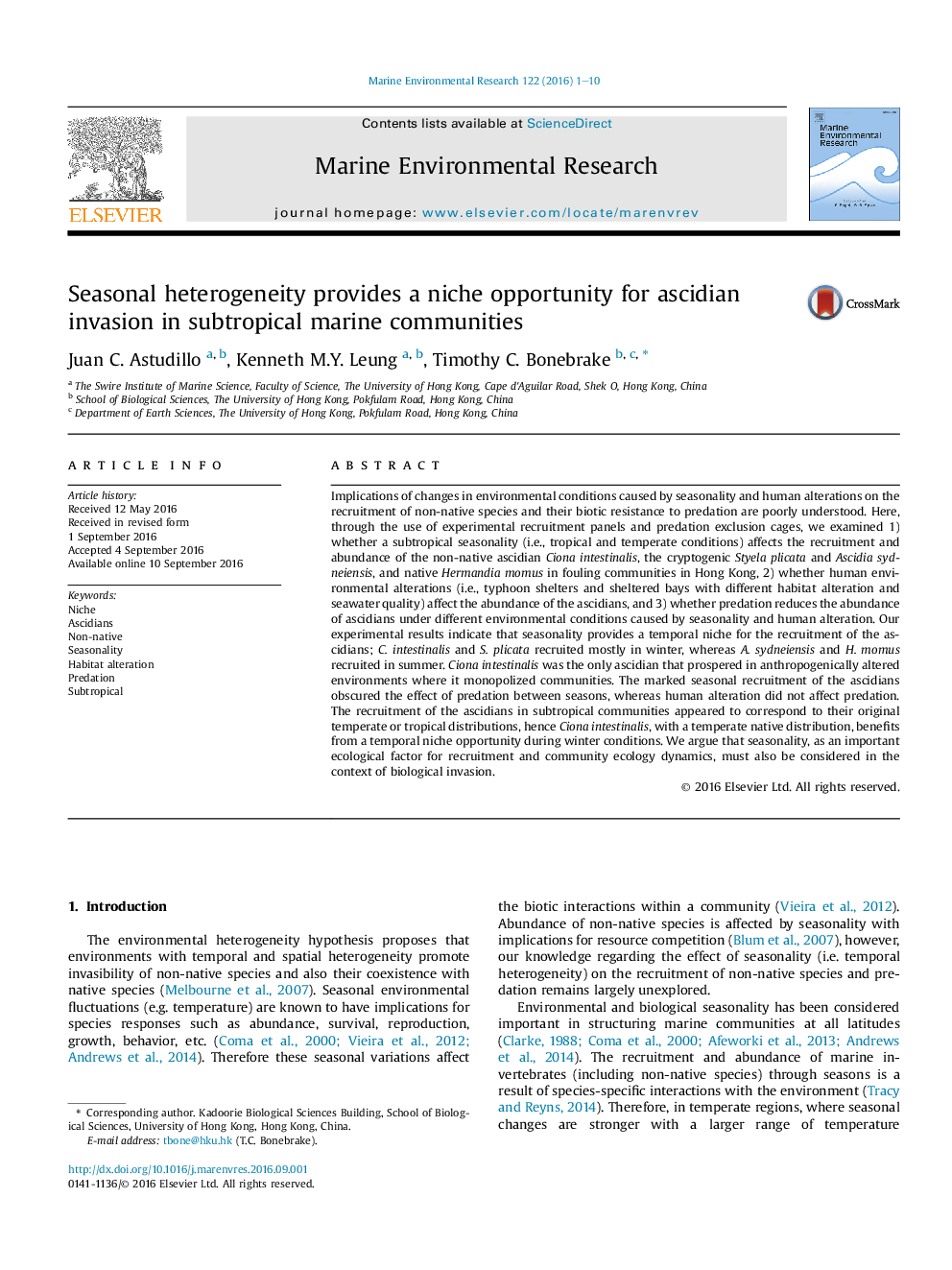| کد مقاله | کد نشریه | سال انتشار | مقاله انگلیسی | نسخه تمام متن |
|---|---|---|---|---|
| 5766307 | 1627561 | 2016 | 10 صفحه PDF | دانلود رایگان |
- Seasonality affects recruitment of ascidians in subtropical fouling communities.
- Non-native ascidian Ciona intestinalis proliferate in human altered marine habitats.
- Recruitment patterns play a more decisive role than predation in ascidian abundance.
- Seasonality and the ascidian's original distribution regulate subtropical invasions.
Implications of changes in environmental conditions caused by seasonality and human alterations on the recruitment of non-native species and their biotic resistance to predation are poorly understood. Here, through the use of experimental recruitment panels and predation exclusion cages, we examined 1) whether a subtropical seasonality (i.e., tropical and temperate conditions) affects the recruitment and abundance of the non-native ascidian Ciona intestinalis, the cryptogenic Styela plicata and Ascidia sydneiensis, and native Hermandia momus in fouling communities in Hong Kong, 2) whether human environmental alterations (i.e., typhoon shelters and sheltered bays with different habitat alteration and seawater quality) affect the abundance of the ascidians, and 3) whether predation reduces the abundance of ascidians under different environmental conditions caused by seasonality and human alteration. Our experimental results indicate that seasonality provides a temporal niche for the recruitment of the ascidians; C. intestinalis and S. plicata recruited mostly in winter, whereas A. sydneiensis and H. momus recruited in summer. Ciona intestinalis was the only ascidian that prospered in anthropogenically altered environments where it monopolized communities. The marked seasonal recruitment of the ascidians obscured the effect of predation between seasons, whereas human alteration did not affect predation. The recruitment of the ascidians in subtropical communities appeared to correspond to their original temperate or tropical distributions, hence Ciona intestinalis, with a temperate native distribution, benefits from a temporal niche opportunity during winter conditions. We argue that seasonality, as an important ecological factor for recruitment and community ecology dynamics, must also be considered in the context of biological invasion.
Journal: Marine Environmental Research - Volume 122, December 2016, Pages 1-10
